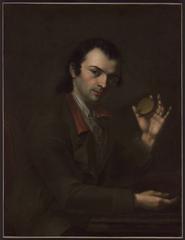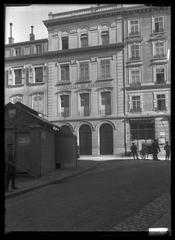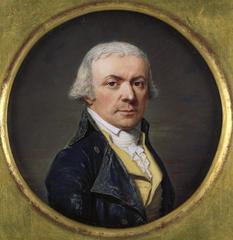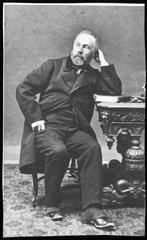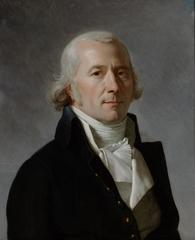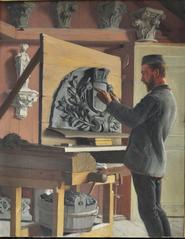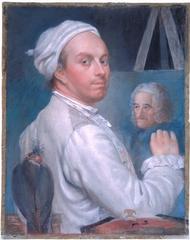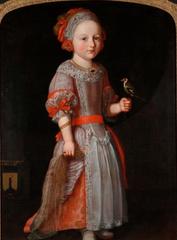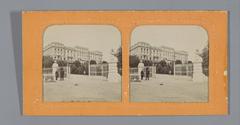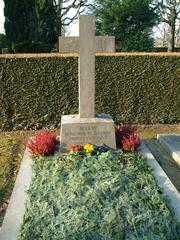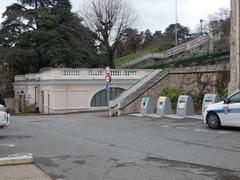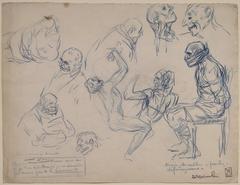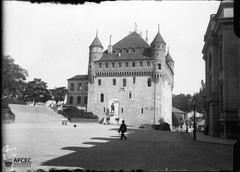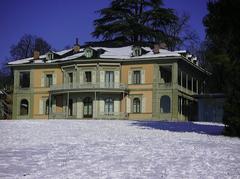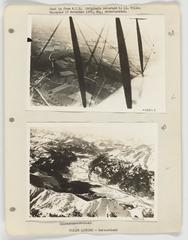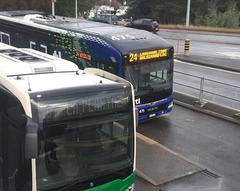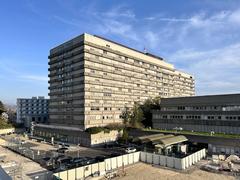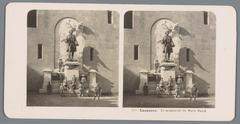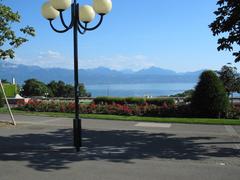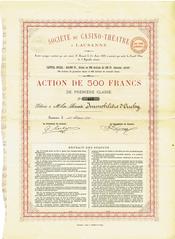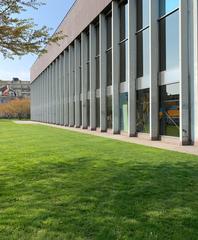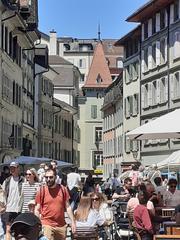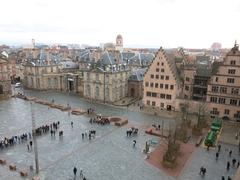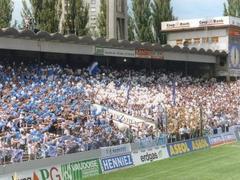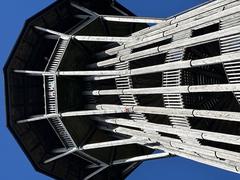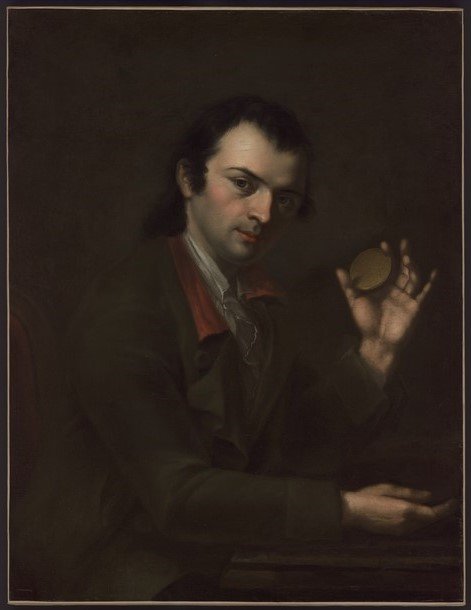
Visiting Guide to Ancien évêché de Lausanne in Lausanne, Switzerland
Date: 20/07/2024
Introduction
The Ancien évêché de Lausanne, also known as the Old Bishop’s Palace of Lausanne, is a treasure trove of historical, architectural, and cultural significance nestled in the heart of Lausanne, Switzerland. This venerable site offers a unique glimpse into the city’s rich past, dating back to the 6th century when it served as the residence of the bishops. Over the centuries, the palace has witnessed numerous transformations, from a medieval episcopal residence to a secular administrative building during the Reformation, and finally to its current role as the Musée Historique de Lausanne. Visitors to this site can explore its architectural grandeur, which encompasses Romanesque, Gothic, and Renaissance elements, reflecting the stylistic transitions over the centuries (Lausanne Tourisme).
Today, the Ancien évêché de Lausanne stands as a symbol of Lausanne’s historical and cultural evolution. It is a must-visit destination for history enthusiasts, architecture lovers, and curious travelers alike. Not only does it house valuable exhibits that narrate the story of Lausanne from its Roman origins to the present day, but it also serves as a vibrant cultural venue hosting various events and educational programs. This comprehensive guide aims to provide all the necessary information for a memorable visit, covering aspects such as the site’s history, visiting hours, ticket prices, accessibility, and nearby attractions. Whether you’re planning a trip to Lausanne or simply interested in learning more about this iconic landmark, this guide will offer invaluable insights into the Ancien évêché de Lausanne.
Table of Contents
- [Introduction](#introductionintroduction)
- [Origins and Early History](#origins-and-early-historyorigins-and-early-history)
- [Architectural Evolution](#architectural-evolutionarchitectural-evolution)
- [The Reformation and Secularization](#the-reformation-and-secularizationthe-reformation-and-secularization)
- [19th and 20th Century Transformations](#19th-and-20th-century-transformations19th-and-20th-century-transformations)
- [Modern Era and Preservation Efforts](#modern-era-and-preservation-effortsmodern-era-and-preservation-efforts)
- [Notable Events and Figures](#notable-events-and-figuresnotable-events-and-figures)
- [Archaeological Discoveries](#archaeological-discoveriesarchaeological-discoveries)
- [Cultural Significance](#cultural-significancecultural-significance)
- [Visitor Experience](#visitor-experiencevisitor-experience)
- [Visitor Information](#visitor-informationvisitor-information)
- [FAQ Section](#faq-sectionfaq-section)
- [Visitor Tips for Ancien évêché de Lausanne](#visitor-tips-for-ancien-évêché-de-lausannevisitor-tips-for-ancien-eveche-de-lausanne)
- [History and Cultural Significance](#history-and-cultural-significancehistory-and-cultural-significance)
- [Opening Hours and Best Time to Visit](#opening-hours-and-best-time-to-visitopening-hours-and-best-time-to-visit)
- [Admission Fees and Guided Tours](#admission-fees-and-guided-toursadmission-fees-and-guided-tours)
- [Accessibility](#accessibilityaccessibility)
- [Photography and Conduct](#photography-and-conductphotography-and-conduct)
- [Nearby Attractions](#nearby-attractionsnearby-attractions)
- [Dining and Refreshments](#dining-and-refreshmentsdining-and-refreshments)
- [Souvenirs and Shopping](#souvenirs-and-shoppingsouvenirs-and-shopping)
- [Safety and Security](#safety-and-securitysafety-and-security)
- [Language and Communication](#language-and-communicationlanguage-and-communication)
- [Weather Considerations](#weather-considerationsweather-considerations)
- [Special Events and Exhibitions](#special-events-and-exhibitionsspecial-events-and-exhibitions)
- [FAQ Section](#faq-sectionfaq-section-1)
- [Conclusion](#conclusionconclusion)
- [Call to Action](#call-to-actioncall-to-action)
- [References](#referencesreferences)
Origins and Early History
The Ancien évêché de Lausanne has a history that dates back to the early medieval period. Originally, it served as the residence of the bishops of Lausanne, who were pivotal in the religious and political life of the region. The first documented mention of the bishopric in Lausanne dates back to the 6th century, although the exact date of the original episcopal residence’s construction remains uncertain. The bishops were influential figures, often involved in the governance of the city and the surrounding territories.
Architectural Evolution
The architectural evolution of the Ancien évêché de Lausanne reflects the changing styles and needs of its occupants over the centuries. Initially, the structures were likely simple wooden buildings, which were gradually replaced by more substantial stone constructions. Significant renovations and expansions occurred during the 12th and 13th centuries, coinciding with the construction of the nearby Lausanne Cathedral. The palace expanded to include a large hall, private chambers, and administrative offices, reflecting the growing power and wealth of the bishopric.
The Reformation and Secularization
The Reformation in the 16th century brought significant changes to Lausanne and its bishopric. In 1536, the city embraced the Protestant Reformation, leading to the secularization of church properties, including the Ancien évêché. The bishopric was dissolved, and the palace was repurposed for various secular uses. During this period, the building underwent modifications to accommodate its new functions, such as serving as a residence for local officials and a venue for administrative activities.
19th and 20th Century Transformations
In the 19th century, the Ancien évêché de Lausanne experienced further transformations as part of broader urban development initiatives. The building was restored and adapted to serve as a museum, showcasing the history and culture of Lausanne and the surrounding region. This period saw the addition of new architectural elements, including neoclassical facades and interior decorations, enhancing the building’s aesthetic appeal and functionality.
Modern Era and Preservation Efforts
In the modern era, the Ancien évêché de Lausanne continues to serve as an important cultural and historical landmark. Preservation efforts focus on maintaining the building’s architectural integrity while adapting it for contemporary uses. Today, the palace houses the Musée Historique de Lausanne, offering visitors a comprehensive overview of the city’s history from its ancient origins to the present day. The museum’s exhibits include archaeological artifacts, historical documents, and interactive displays that provide insights into Lausanne’s rich heritage.
Notable Events and Figures
Throughout its history, the Ancien évêché de Lausanne has been associated with numerous notable events and figures. One significant event was the Council of Lausanne in 1449, part of the larger Council of Basel-Ferrara-Florence, which aimed to address various ecclesiastical issues and played a crucial role in the religious and political dynamics of the time. Additionally, the palace has been linked to several prominent bishops, including Guillaume de Varax, known for his efforts to reform the local clergy and improve diocesan administration.
Archaeological Discoveries
Archaeological excavations at the Ancien évêché de Lausanne have uncovered valuable insights into the site’s long history. These excavations have revealed remnants of earlier structures, including foundations, walls, and artifacts from the Roman and early medieval periods. Notable discoveries include Roman coins, medieval pottery, and architectural fragments, offering glimpses into the daily life and activities of the site’s past occupants.
Cultural Significance
The Ancien évêché de Lausanne holds significant cultural importance for the city and its residents. As a symbol of Lausanne’s rich historical heritage, the palace serves as a reminder of the city’s religious and political evolution over the centuries. The building’s architectural features, including its medieval and neoclassical elements, reflect the diverse influences that have shaped Lausanne’s urban landscape. The palace’s role as a museum further enhances its cultural significance, providing a space for education, reflection, and appreciation of the city’s past.
Visitor Experience
Visitors to the Ancien évêché de Lausanne can explore its historical and architectural features through guided tours and interactive exhibits. The museum offers educational programs and activities designed to engage visitors of all ages. Highlights include viewing original artifacts, participating in hands-on workshops, and attending special events and lectures that delve into various aspects of Lausanne’s history. The museum’s location in the heart of Lausanne’s historic district allows visitors to explore other nearby attractions, such as the Lausanne Cathedral and the Château Saint-Maire.
Visitor Information
- Visiting Hours: The Ancien évêché de Lausanne is open to visitors from Tuesday to Sunday, 10:00 AM to 5:00 PM. It is closed on Mondays and public holidays.
- Tickets: General admission tickets are priced at CHF 10 for adults, CHF 7 for students and seniors, and free for children under 16. Family and group discounts are available.
- Accessibility: The museum is wheelchair accessible, with facilities to accommodate visitors with disabilities. Guided tours for visually and hearing-impaired individuals can be arranged upon request.
- Travel Tips: For a comprehensive experience, consider combining your visit to the Ancien évêché with nearby attractions. The Lausanne Cathedral and the Château Saint-Maire are within walking distance and offer additional insights into the city’s history. Photography is allowed, but flash and tripods are prohibited to preserve the artifacts.
FAQ Section
- What are the visiting hours of Ancien évêché de Lausanne? The museum is open from Tuesday to Sunday, 10:00 AM to 5:00 PM, and closed on Mondays and public holidays.
- Do I need tickets for Ancien évêché de Lausanne? Yes, general admission tickets are required. Prices are CHF 10 for adults, CHF 7 for students and seniors, and free for children under 16.
- Is Ancien évêché de Lausanne accessible? Yes, the museum is wheelchair accessible and offers facilities for visitors with disabilities.
Visitor Tips for Ancien évêché de Lausanne
History and Cultural Significance
Originally built in the 13th century, the Ancien évêché de Lausanne served as the residence for bishops and played a crucial role in the city’s religious and cultural development. Its architecture reflects various historical periods, making it a valuable cultural and historical monument. Today, it houses exhibitions that delve into Lausanne’s past, making it an essential stop for history enthusiasts.
Opening Hours and Best Time to Visit
The Ancien évêché de Lausanne is open to visitors throughout the year. However, the opening hours can vary depending on the season and special events. Typically, the site is open from 10:00 AM to 5:00 PM from Tuesday to Sunday. It is advisable to check the official Lausanne Tourism website for the most up-to-date information on opening hours and any potential closures. The best time to visit is during the spring and summer months (April to September) when the weather is pleasant, and the surrounding gardens are in full bloom. Early mornings or late afternoons are ideal for avoiding large crowds and enjoying a more serene experience.
Admission Fees and Guided Tours
Admission fees for the Ancien évêché de Lausanne are quite reasonable. As of 2024, the standard ticket price for adults is CHF 10, while children under 16 can enter for free. There are also discounted rates for students, seniors, and groups. For the most accurate and current pricing, refer to the official ticketing page. Guided tours are highly recommended for those who wish to delve deeper into the history and significance of the site. These tours are available in multiple languages, including English, French, and German. Booking a guided tour in advance is advisable, especially during peak tourist seasons.
Accessibility
The Ancien évêché de Lausanne is committed to being accessible to all visitors. The site is equipped with ramps and elevators to accommodate wheelchair users and those with mobility issues. Additionally, there are tactile maps and audio guides available for visually impaired visitors. For more detailed information on accessibility, visit the accessibility section of the official website.
Photography and Conduct
Photography is allowed within the Ancien évêché de Lausanne, but the use of flash and tripods is generally prohibited to preserve the artifacts and the ambiance of the site. Visitors are encouraged to be respectful of the historical significance of the location by maintaining a quiet demeanor and not touching the exhibits.
Nearby Attractions
The Ancien évêché de Lausanne is conveniently located near several other notable attractions, making it easy to plan a full day of sightseeing. Some nearby points of interest include:
- Lausanne Cathedral: Just a short walk from the Ancien évêché, this Gothic masterpiece is a must-visit. (Lausanne Cathedral)
- Palais de Rumine: Home to several museums, including the Cantonal Museum of Fine Arts and the Cantonal Museum of Archaeology and History. (Palais de Rumine)
- Esplanade de Montbenon: A beautiful park offering stunning views of Lake Geneva and the Alps. (Esplanade de Montbenon)
Dining and Refreshments
There are several dining options available near the Ancien évêché de Lausanne. For a quick bite or a coffee, consider visiting one of the nearby cafes such as Café de l’Hôtel de Ville or Le Barbare. For a more substantial meal, the Brasserie Lausanne-Moudon offers a delightful menu featuring local Swiss cuisine. Reservations are recommended, especially during peak dining hours.
Souvenirs and Shopping
Visitors looking to take home a piece of Lausanne can find a variety of souvenirs at the gift shop located within the Ancien évêché. The shop offers a range of items, including books, postcards, and locally made crafts. Additionally, the nearby pedestrian streets of Rue de Bourg and Rue de la Mercerie are lined with boutique shops and markets where visitors can purchase unique gifts and mementos.
Safety and Security
The Ancien évêché de Lausanne is a safe and secure location, with staff and security personnel available to assist visitors. It is always a good idea to keep personal belongings secure and be aware of your surroundings. In case of emergencies, there are clearly marked exits and first aid stations within the premises.
Language and Communication
While French is the primary language spoken in Lausanne, most staff members at the Ancien évêché de Lausanne are proficient in English and other major European languages. Information panels and guides are available in multiple languages to ensure that international visitors can fully appreciate the historical and cultural significance of the site.
Weather Considerations
Lausanne experiences a temperate climate, with mild winters and warm summers. It is advisable to check the weather forecast before your visit and dress accordingly. Comfortable walking shoes are recommended, as the site involves some walking and standing. During the summer months, carrying a bottle of water and wearing sunscreen can enhance your comfort.
Special Events and Exhibitions
The Ancien évêché de Lausanne frequently hosts special events, temporary exhibitions, and cultural programs. These events provide a unique opportunity to experience the site in a different light and learn more about specific aspects of its history and significance. For a schedule of upcoming events, visit the events page on the official website.
FAQ Section
- What are the visiting hours for Ancien évêché de Lausanne? The site is typically open from 10:00 AM to 5:00 PM from Tuesday to Sunday, but it’s best to check the official website for the most up-to-date information.
- Are there guided tours available at Ancien évêché de Lausanne? Yes, guided tours are available in multiple languages, including English, French, and German. It is advisable to book in advance, especially during peak seasons.
- What is the admission fee for Ancien évêché de Lausanne? As of 2024, the standard ticket price for adults is CHF 10, while children under 16 can enter for free. Discounts are available for students, seniors, and groups.
Conclusion
The Ancien évêché de Lausanne is a must-visit destination for anyone interested in the rich history and culture of Lausanne. With its fascinating exhibits, educational programs, and stunning architecture, it offers a unique glimpse into the city’s past. Plan your visit today and immerse yourself in the captivating history of this remarkable site.
For more information, visit the official website.
Call to Action
Download the Audiala mobile app for a guided audio tour of the Ancien évêché de Lausanne and other historical sites in Lausanne. Don’t forget to check out our related posts and follow us on social media for more updates and travel tips.
References
- Lausanne Tourisme. (2024). Lausanne Tourism
- Lausanne Tourisme. (2024). Lausanne Cathedral
- Lausanne Tourisme. (2024). Palais de Rumine
- Lausanne Tourisme. (2024). Esplanade de Montbenon
